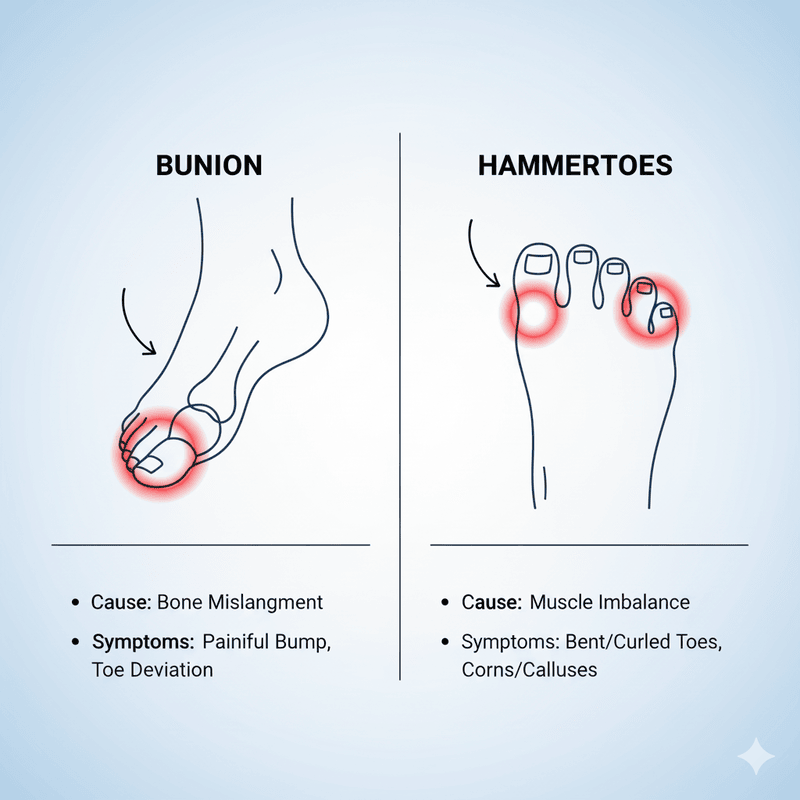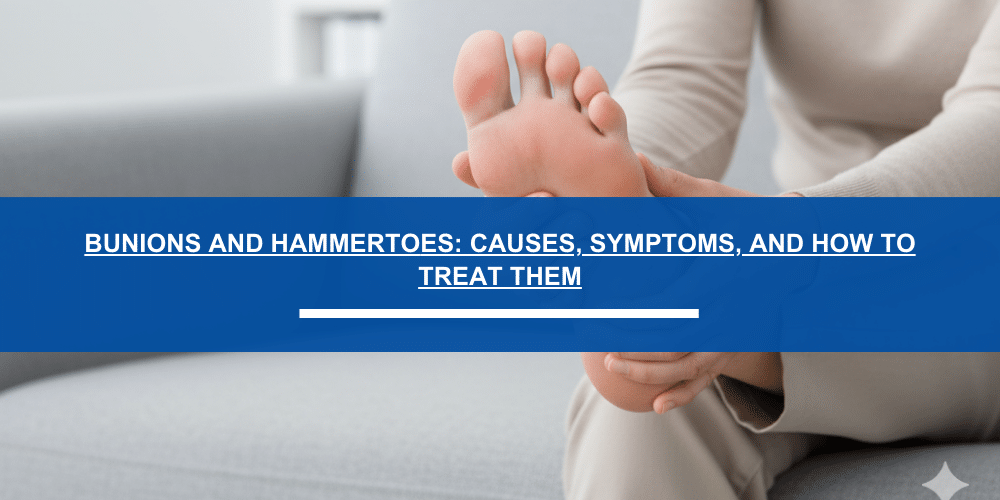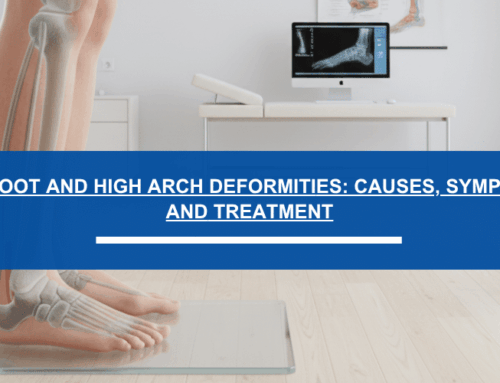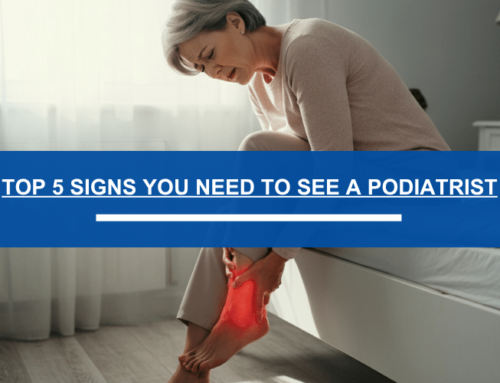Have you noticed a change in your toes that’s making shoes uncomfortable? Dealing with bunions and hammertoes can be more than just a cosmetic issue—it can affect your comfort and ability to stay active. If you’re worried about that bump on your big toe or a toe that’s started to curl, you’re in the right place to get some clear answers.
Let’s break down what’s going on and what you can do about it.
What Exactly Are Bunions and Hammertoes?
It’s easy to get these two conditions confused, but they affect your toes in different ways. Think of it like this:
- Bunions (Hallux Valgus): This is that bony bump you see at the base of your big toe. It forms when your big toe pushes against the next toe, forcing the joint to get bigger and stick out. This can be caused by genetics, arthritis, or even the shoes you wear.
- Hammertoes: This happens when one of your toes—usually the second, third, or fourth—bends downward at the middle joint, resembling a hammer. It’s often the result of a muscle imbalance or wearing shoes that are too tight.

Common Causes Behind These Foot Problems
So, why do bunions and hammertoes develop? It’s often a mix of factors that contribute over time. Here are some of the usual suspects:
- Genetic predisposition: Sometimes, the foot structure you inherit makes you more likely to develop these issues.
- Your choice of footwear: Consistently wearing narrow, high-heeled, or tight shoes is a major contributor.
- Arthritis: Joint inflammation can lead to changes in your foot’s structure.
- Muscle imbalances: An imbalance in the muscles and tendons in your foot can pull your toes out of alignment.
Symptoms to Watch For
Not sure if what you’re experiencing is a bunion or hammertoe? Your feet will give you signs. Look out for:
- Pain or tenderness around the affected toe joint.
- Swelling, redness, or inflammation.
- Corns and calluses developing where your toes rub against your shoes.
- Difficulty wearing shoes without discomfort.
- A visible shift or change in the alignment of your toes.

Your Guide to Treatment Options
The good news is, you don’t have to live with the discomfort. There are effective ways to manage and treat bunions and hammertoes, ranging from simple changes to surgical solutions.
Conservative (Non-Surgical) Treatments:
- Wearing the right shoes: Switching to footwear with a wide toe box gives your toes more room.
- Padding or splints: These can help reduce friction and pressure on the affected area.
- Custom orthotics: Shoe inserts designed for your feet can help improve mechanics and provide support.
Surgical Treatments:
For more severe or painful cases that don’t respond to conservative care, surgery may be the best option.
- Bunionectomy or hammertoe correction: These procedures are designed to remove the bump and correct the alignment of the toe.
- Realignment of bones and tissues: In advanced cases, the surgeon may need to realign the bones and repair the soft tissues to restore proper function.
How to Prevent Future Problems
A little prevention goes a long way in keeping your feet healthy. Here’s what you can do:
- Avoid tight, narrow shoes and high heels whenever possible.
- Perform regular stretches and strengthening exercises for your foot muscles.
- Seek an early evaluation if you notice any pain or changes in your toes.
Take Control of Your Foot Health Today
Early attention is key to effectively managing bunions and hammertoes and preventing long-term problems. If you’re experiencing discomfort or have noticed changes in your feet, don’t wait for the pain to get worse.
Read our Guide on Top 5 Signs You Need to See a Podiatrist.
Ready to find relief? The experts at City Orthopaedics & Sports Medicine are here to help. Schedule your evaluation today and take the first step toward pain-free feet.
Frequently Asked Questions (FAQs)
1. Can bunions and hammertoes go away on their own?
Unfortunately, these are progressive deformities and do not go away on their own. Conservative treatments can manage symptoms and slow progression, but only surgery can correct the underlying structural issue.
2. Is surgery for bunions or hammertoes painful?
Modern surgical techniques and pain management protocols have significantly reduced the discomfort associated with these procedures. Your doctor will discuss a comprehensive plan to manage pain during your recovery.
3. How long is the recovery time after surgery?
Recovery varies depending on the specific procedure. You may need to wear a special shoe or boot for several weeks. Full recovery and a return to all activities can take a few months, but most patients experience significant relief long before that.
4. Do I need a referral to see a specialist?
This can depend on your insurance plan. However, you can always call our office at City Orthopaedics & Sports Medicine, and our staff will be happy to assist you with scheduling and insurance questions.
5. What kind of shoes should I wear to prevent bunions?
The best shoes for preventing bunions and hammertoes have a wide, flexible toe box, good arch support, and a low heel. Avoid shoes that are pointed, narrow, or cram your toes together.







